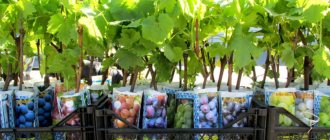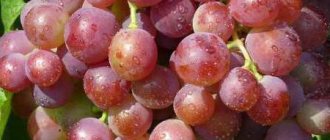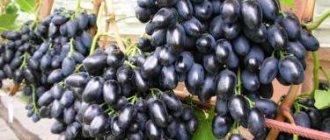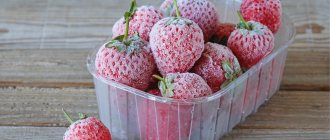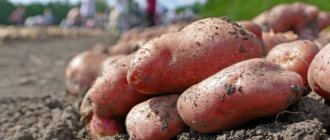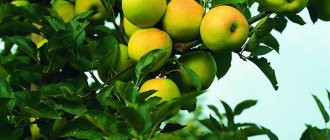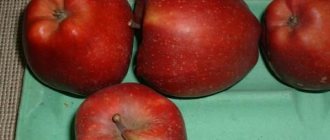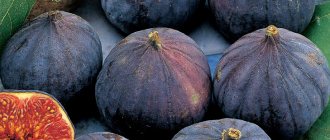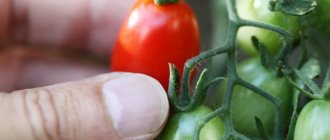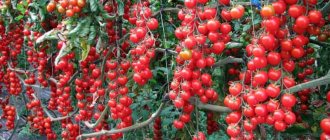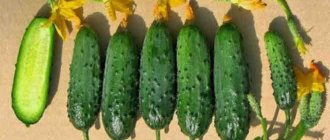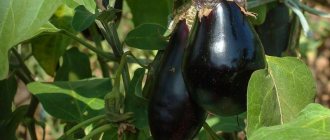Many gardeners have long come to the conclusion that good grapes can only be grown in the southern parts of the country. But in reality everything is completely different. Today, a large number of varieties have been bred. They are perfect for growing not only in the south. But also in central Russia. These varieties ripen well in a short time. One of these varieties is the Sharova Riddle grape.
This bush can grow in a wide variety of conditions. At the same time, it gives a very good harvest if the gardener follows all the rules of agricultural technology and subsequent care.
Sharov's grapes: description of the variety
Sharov's grapes appeared back in 1972. And it was named after the famous breeder R.F. Sharova. Thanks to his experiments, a variety was obtained that is able to survive in the harshest conditions. And even bear fruit. Moreover, on the territory of Siberia. Where the climate is generally not favorable to such fruit and berry crops.
This grape variety is a fairly tall plant. Has a high rate of development. Moreover, its shoots are very long. But by no means massive. On the contrary, they are very sophisticated and flexible.
The vine ripens completely within a very short time. Which, of course, is in a sense an advantage of this variety over all other varieties. The nodes are located at a very small distance from each other. Large eyes are visible on them. From which the berries themselves then emerge.
Main advantages of the variety
- Availability of material for planting. The variety is propagated by cuttings. No vaccination required.
- High winter hardiness. Without shelter, grapes can tolerate frosts down to minus 32°C. The roots are resistant to soil freezing. It is a good rootstock for less winter-hardy varieties.
- Undemanding to soil fertility. The roots of this variety reach 10 meters, which allows the bush to be supplied with nutrients. However, it is not recommended to plant in heavily moistened areas and in areas close to groundwater.
- Thin and flexible, but at the same time strong vine. Easily bends to the ground.
- Early, 2-3 years after planting, fruiting.
External characteristics of the variety
The grape leaves of this variety are quite standard in shape and size, as well as color, like those of any other varieties. The only point is that they are completely free of pubescence. The flowers are bisexual - both male and female. Therefore, the gardener himself does not have to worry about pollinators at all. As a rule, from two to three inflorescences can form on one shoot.
Berries
The berries of the Sharov's Riddle grapes are round, medium in size, colored dark blue. Their weight ranges from two to four grams. The berries are covered with a thick skin with a waxy coating. It is not felt when used. The Riddle Sharova grape variety (reviews confirm this) has excellent taste, thanks to which it occupies a leading position among varieties developed for cultivation in the northern regions.
The aroma is rich, but not cloying. Its intensity largely depends on the degree of ripening. When harvested early, the berries have a pronounced strawberry aroma. The sugar content of the pulp reaches 22%, and it does not decrease even after three months of storing the bunches.
Description of the harvest
The bunches of this grape are medium. The weight of one can vary from 300 to 600 grams. Everything depends solely on the climatic conditions in which this variety grows. And also on how the gardener himself cares for the plant.
The bunches are not dense. But rather, very loose. Consist of small round berries. When they are fully ripe, one berry weighs up to three grams, no more. When the berries are just forming, they have a fresh green hue. But as they mature, they can change their color to dark blue. Almost black. Each berry is covered with a light waxy coating.
The skin is quite thin. But at the same time very dense. Inside, under the skin, you can find very tasty tender pulp. It has a typical grape taste and aroma.
When the berries are fully ripe, they acquire a light, pronounced aroma of strawberries or raspberries. The fruits contain a large amount of sugar (about 22%), and in general the berries have such an aroma due to the characteristic varietal characteristics and characteristics.
Trimming
To increase yield, prune with two eyes. On ripened shoots, initially leave 1-2 clusters, and then their number can be increased to three. When the vine begins to grow, tie it up without allowing it to come into contact with the soil. Pruning is usually done in the fall. This procedure will help avoid frost damage to the vine.
In addition, this variety, with little stress on the root system, tolerates the winter months much easier.
Sharov's grapes: advantages of the variety
Of course, in order to better understand the specifics of the variety, we need to consider some of its special characteristics. And also advantages. Among the advantages of the variety, gardeners and breeders highlight several particularly significant features:
- The variety is very early ripening. Fresh and tasty berries will not keep you waiting long. The maturation of the entire hand occurs approximately on the hundredth day after the buds swell. And they go through the entire cycle of their own ripening. In greenhouse conditions, the harvest can be harvested even earlier. Approximately 20-30 days;
- The grapes of this variety are distinguished by a fairly high level of yield. For example, from a bush aged 5-6 years you can collect up to ten kilograms of excellent, tasty, high-quality berries;
- Even if the bunches have already become overripe, the berries in rare cases begin to fall off. They hold on to the bush quite tightly. This only makes them sweeter and tastier. The berries may wilt a little. But this does not make them lose their qualities at all. On the contrary, they strengthen them. And this is also their great advantage;
- After the gardener has harvested the grapes, he can store the bunches for up to three months. At the same time, the grapes will not lose their presentation. And also will not lose its beneficial and taste properties;
- The berries are held very tightly on the bunches. They are quite easy to transport over long distances. They don't wrinkle or leak. They do not lose their appearance. And also they do not become stale and do not rot;
- This variety is universal. The berries can be eaten fresh. And also prepare various dishes, jams, preserves, compotes and other drinks from them. There are also gardeners who claim that this variety is excellent for making homemade wine.
Comparison with analogues
“Sharov’s Mystery” is a universal grape variety. The berries are consumed fresh and used to make delicious homemade wine, desserts, juices, and jam. The same universal varieties include “Isabella”, “Moldova”, “Minsk pink” and several more varieties. For clarity, consider them in a comparative table
| Sign | Variety | |||
| Sharov's riddle | Isabel | Moldova | Russian early | |
| Ripening period | 100-110 days | 145-165 days | 150 – 160 days | 110 – 115 days |
| Frost resistance | Up to -34 °C | Up to -30 °C | up to -26C | -23C |
| Productivity | 10 kg. | 50 kg. | up to 150 kg per bush | Up to 25 kg |
| Bunches | 300-600 g. | 130-250 g. | 300 g – 1 kg | 200 – 400 g |
| Taste | Strawberry-raspberry | Pronounced nutmeg, shades of strawberry, black currant | Plum shade | Notes of caramel |
| Color | Dark blue | Dark blue | Dark blue with purple tint | Dark pink |
| Disease resistance | weak | High | Above average | Above average |
| Shelf life | Up to 3 months | Few weeks | From 3 months to six months | 1 month |
| Sugar accumulation | 19-22% | 18-20% | 16 – 19% | 17 – 21% |
| Acidity | 8-10 g/l | 8-12 g/l | 8-10 g/l | 6 – 7 g/l |
Other advantages of the variety
There are also several other characteristics that relate to the advantages of this variety. For example, the Sharova Riddle grapes are frost-resistant. It can easily tolerate temperatures down to -32 degrees.
Even if there is no significant precipitation in winter, the plantings, as a rule, need to be covered. Although they usually do without additional cover. Due to the fact that the root system of the vineyards is stable. If the soil freezes, the grapes will still survive in the winter. It hardens, and next season you can expect even more abundant fruiting from the bush.
The bush begins to bear fruit in the second year after the grapes were planted in open ground. The vine can be conveniently removed from the support for the winter. Because it is flexible. And also it is very thin. But, of course, it is best to do this as carefully as possible. Even if the bush is planted in an area where the soil is infertile or poor. All the same, the variety will give an excellent harvest.
Reviews
Valery Petrovich, Leningrad region
The “mystery” bush has been growing in my garden since 2006. Among the positive qualities, I would like to note the early ripening, sweet taste and ability of the berries to hang on the bush for a long time. Among the disadvantages, it is susceptible to mildew. Therefore, it is impossible to do without preventive treatments. I spray in spring and autumn with Proton Extra. I water it through a plastic pipe that I installed during planting.
Tatyana Pavlovna, Cheboksary
The variety won me over due to its unpretentiousness in care. I don’t do any special activities other than watering in dry years. I don’t untie the lashes from the trellis for the winter. It is rare for a small part of the tips of the vine to freeze. The taste is of course a B, but without worries. I got rid of weeding with the help of straw, which I use to line the soil every year in the vineyard. By autumn, almost all the straw rots, I embed these remains into the soil, digging it shallowly.
The “Sharov’s Mystery” grapes deserve to take pride of place in every garden plot. Even a novice winegrower can cope with the unpretentious nature of the plant. The variety will bring a large harvest even in difficult weather conditions and will not take much time to care for.
Sharov's grapes: disadvantages
If we talk about the disadvantages of the variety, then in principle there are none. The only point is that the variety has rather weak immunity and resistance if we are talking about fungal diseases. Therefore, in agricultural technology and subsequent care, special attention is paid to preventive antifungal treatments of the plant.
Grapes Mystery Sharov: reviews
Since that wonderful time when humanity learned the wonderful taste of grape berries, breeders, both professionals and amateurs, have bred a huge number of different varieties of this wonderful plant. Those gardeners who are already familiar with such a Siberian variety as Sharov’s Riddle can speak with confidence about its merits.
If you listen to the reviews of the owners of the Riddle, you can hear only praise. Gardeners believe that this is one of the most suitable varieties for growing in the northern regions. The plant is also ideal for novice winegrowers: it does not require special care and at the same time produces excellent yields of delicious, juicy berries. So there’s absolutely nothing bad to say about Sharov’s Riddle. All you have to do is buy a bush and see for yourself.
Features of planting and care
When planting a variety, it is necessary to choose the most spacious and illuminated area. Which will be protected from the wind. And also from strong drafts. To do this, it is best to choose a garden plot located on the south side.
It is worth noting that the root system of a grape bush is capable of penetrating to a fairly great depth. For this reason, it does not matter in what composition the soil this grape variety will grow. It can also easily take root on rocky soil. So it’s worth taking these features into account. And don’t worry too much about the soil composition.
It is best to plant the variety approximately when more stable temperatures are established. The soil will warm up to +12 degrees. Just like the air temperature in general. The timing usually varies depending on the climatic conditions in which this variety is planted. Typically, planting takes place from mid-April until May.
Features of agricultural technology
When planting grapevine varieties, you must choose a lighted area, protected from cold winds. The best part of the garden is on the south side.
Landing Features
The root system of the Sharov's Mystery grape penetrates to great depths, so the soil is not particularly important. The variety grows quietly even on rocky soil.
Important! You need to pay special attention to the height of groundwater: in swampy soil the vine will die.
The Riddle of Sharova grape variety is planted after positive temperatures have reached at least +12 degrees. Planting dates vary depending on the climatic conditions of the region: from mid-April to May.
There should be no swollen buds on the planted seedlings during spring planting. And in the fall you need to have time to plant the vine before frost. If these conditions are not met, the grape seedlings will not take root.
When creating a grape plantation, the choice of direction is important. Most often, plants are planted in rows. Experienced gardeners recommend dividing ridges from north to south. This planting will allow the soil to warm up evenly.
Before planting grapes, a hole is prepared, drainage is placed at the bottom, and the rest of the volume is filled with a nutrient mixture. Pour two buckets of water onto one plant and wait until it is completely absorbed.
They make a mound in the center and “sit” the vine, like on a chair. Sprinkle soil on top and pat it down well to squeeze out air from under the roots. Then you need to water again.
How to care
Traditional care after planting the Sharov’s Riddle grapes:
- regular watering and loosening of the soil;
- weed removal;
- fertilizing the grapevine;
- treatment against diseases and pests:
- timely pruning and bush formation.
Top dressing
To feed grapes of the Zagadka Sharova variety, organic fertilizer is mainly used. Plants respond well to manure or compost.
Dry organic matter is placed under grape bushes in spring or autumn. It turns out a kind of mulching, plus plant nutrition. It is useful to add wood ash under the grape bushes of the Zagadka Sharova variety and water the vine with an infusion of mullein and green grass.
Trimming
In the fall of the first year, all shoots are cut out of the bush, leaving only one, the strongest and most mature. You can determine the readiness of the vine for wintering by color. Look at the photo below: a ripened grape shoot should be brown. If it is green, it means it is not ripe. It just needs to be removed.
Grapes are trimmed by 5-6 eyes during autumn work. When the vine leaves the winter, you need to cut off the shoots again, leaving only 2-4 of the strongest ones. Thanks to pruning, you can form a bush and regulate the load on the seedlings.
The yield on adult bushes is also rationed. As a rule, if the summer is short, you should leave no more than 3 clusters on one vine.
A gardener's opinion about Sharov's Riddle grapes:
Features of reproduction
The grape variety from R. F. Sharov can be propagated using:
- cuttings;
- vines;
- shoots.
Using any of these options, it is better to first grow a seedling, preferably planting an annual plant in a permanent place.
Preparing for landing
Before planting, the material should be carefully inspected. There should be no already swollen buds on it. Also, if a gardener is planting vines in the fall, he should do so before frost occurs. If the gardener does not comply with these conditions, then the seedlings simply will not take root. And this will lead to the gardener losing any productive bushes.
It is best to plant grapes in rows. And they are divided from north to south. Because the soil warms up better this way. It happens more evenly. Just before planting the grapes, the gardener prepares the holes.
Growing grapes: necessary conditions and planting
It is better to plant cuttings in well-lit areas.
The vine does not like drafts. Places of possible flooding should be avoided and plantings should not be located close to groundwater. The best place will be the southern walls of the building. This grape variety can grow well in any soil due to its well-developed root system. Grape roots can grow up to 10 meters deep. Planting seedlings must be done in the spring, when warm weather arrives and the earth warms up well. The best time for this is mid-April - May.
A prerequisite is that this activity must be carried out before the buds open. If you miss this moment and plant seedlings with buds in full bloom, the survival rate will be very low. Planting can be done not only in spring, but also in autumn. However, this cannot be delayed for long and it is advisable to complete the event before the onset of frost.
Planting cuttings is carried out as follows: dig holes or a trench and lay a nutrient mixture without manure on the bottom. Then the seedling is carefully lowered and covered with earth. After planting, mulch the soil with compost or manure. This procedure should be performed 2 times a year - in spring and autumn.
Soil preparation
Drainage systems are placed at the bottom of the pit. As a rule, this is broken brick or expanded clay. It is best to fill the rest of the pit with a special nutrient mixture. One plant requires approximately two buckets of warm, settled water. And then they wait until this water is completely absorbed into the hole.
A small mound is made in the center. The seedling itself is planted in it. Lightly sprinkle with fertile soil. They also slam it in order to squeeze out all the unnecessary air from under the roots. Because because of it, they can settle down worse and worse. Then you should water the plant again.
Growing areas
The variety is frost-resistant, so it tolerates low temperatures well. The plant is famous for its early ripening. Suitable for growing in regions with short summers and cold winters. Can be grown in Siberia and the Urals, in the Moscow region, as well as in the south of the country.
To successfully grow grapes you need:
- Choose high-quality planting material.
- Decide on a location.
- Prepare the soil.
- Build supports for the future plant.
- Plant a seedling.
- Provide regular watering (especially in summer).
- Apply fertilizing in a timely manner.
- Carry out annual pruning of the vine.
By following the recommendations, you can get a tasty and sweet harvest.
Landing dates
You can plant grapes in open ground in early spring or autumn. It is recommended to plant seedlings when the soil warms up to 13 °C, usually in late April - early May. When purchasing planting material in the fall, you must immediately plant it in the ground and not store it until spring. Autumn planting is carried out before the onset of cold weather, during which time the young plant will have time to adapt to its new location.
Site selection and soil preparation
To plant the bush, you need to choose a sunny place, preferably on the south side. Trees and bushes should not grow nearby. Do not plant the plant in a place that is constantly exposed to drafts or strong gusts of wind. Groundwater should not be close. Their distance to the ground surface should be at least 5 m.
How to choose the right seedling
It is better to buy seedlings in the fall from nurseries or specialized stores. At this time of year there is a large selection of high-quality planting material. They go on sale immediately after digging, the seedlings are full of strength and are not weakened after winter storage. The seedling should have 4 buds, the bark is dark brown, hard, and has a smooth surface. Planting material should not have dry leaves and shoots. It is worth checking that the shoot on the cut is dark green. When you press on the peephole, it should retain its shape. A high-quality vine has a well-developed root system and a healthy appearance.
The choice of planting material should be approached with full responsibility
Planting process step by step
When planting grapes, you must follow the step-by-step instructions:
- Prepare the hole. Dig a hole up to 50 cm deep. Place a drainage layer at the bottom. Fill a quarter of the hole with the nutrient mixture.
- Place the seedling in the planting hole and spread the roots along the bottom.
- Fill the hole with nutrient soil.
- Compact the soil tightly.
- Water the seedling with two buckets of water and spread mulch on top.
- Install a structure for weaving vines.
The young plant must be shaded for a week. By following the planting rules, you can ultimately get a healthy bush that can bear fruit for a long time and with high quality.
Sharov grapes: variety care
There are several aspects that relate to plant care. Overall, it's quite traditional. The same care as for other crops. The plant needs regular watering. And also in the implementation of regular loosening of the soil. But this should always be done extremely carefully.
Weeds should be removed promptly. Because it not only sucks all the nutrients out of the soil. But it can also cause the development of various pests and microorganisms.
How to plant grapes
To plant cuttings, a classic scheme is used: in a selected place protected from drafts, it is necessary to dig a shallow trench (for row planting) or a hole (for single planting). A prerequisite is good drainage. To do this, large stones, gravel, and broken bricks are placed at the bottom.
Required soil composition
Riddle, like other varieties, is sensitive not to the composition of the soil itself, the presence of minerals and nutrients in it, but to the fraction. Heavy, clayey soils with stagnant water are absolutely not suitable. The initial dose of fertilizer is applied during planting, when a soil mixture is created from humus and soil. The use of fresh humus is not allowed; it can burn the roots of the seedling.
Selection of seedlings
Due to the good viability of the variety, there are no special restrictions on the choice of seedling: it can be one or two years old, but the main thing is that it is healthy and not affected by pests and diseases. Propagation by cuttings is allowed, but the first option is preferable.
Seating chart
When planting seedlings, the standard scheme is followed: the distance between them is up to 3 meters, away from tall, shading plants. The bush is immersed deeply in the ground, leaving a couple of buds above the surface. When choosing a location, you need to meet 2 conditions: plenty of sun and no drafts.
Fertilizing and watering young grapes
The riddle is unpretentious: all the necessary substances are laid when planting the seedling. A developed root system allows you to find the elements required for bush growth in the soil. To evenly distribute the load on the fragile stem, shoots are removed during the first year, leaving one strong one. Such radical pruning allows you to strengthen the plant and strengthen it.
Watering is carried out regularly, but without excessive fanaticism, so as not to soak the roots.
Rules for applying fertilizers and fertilizing
For feeding it will be enough to use organic matter. Because compost and manure have a very beneficial effect on plants. It is also worth considering that it is best to add organic matter in dry form. Right under the bush.
This can be done either in the spring or in the autumn. In fact, organic fertilizer also mulches the soil. And the plant is nourished with useful substances. It is also useful to add wood ash under the bush. Or water it with mullein-based infusion. But this should be done very carefully so as not to harm the plant.
Reproduction
Cuttings root quickly, which makes it easy to obtain your own root planting material. The variety can be used as a frost-resistant rootstock. Fruiting begins quickly; winegrowers try the harvest from signal clusters the very next year after planting. A bush that has reached 5-6 years of age is considered mature.
All the pros and cons of the variety are further revealed by the author of the video:
For planting, it is still recommended to choose the warmest place with low groundwater that does not flood in the spring. Grapes grow well near the southern wall of the house, which gives it heat. According to reviews, it is quite undemanding to soils, capable of growing and producing good harvests on poor, sandy and rocky substrates. However, to obtain good results, it is recommended to fertilize the bushes and mulch the holes with manure or compost.
Grape pruning
Pruning is carried out from the very first year after the plant was planted in open ground. The most mature shoot is left, which will be the ancestor of the future harvest; all other shoots should be cut out. As for the readiness of the vine for the winter period, this is best determined by its color - it should be brown. If the shoot is green, then this indicates that it has not had time to ripen.
The variety can be propagated in several ways: by cuttings, using vines or using shoots. Using any of these options suggests that it is best to grow the seedling first, then plant it in a permanent location, but make sure it is strong and adaptable enough and that it will withstand some harsh conditions. In general, gardeners choose a method in accordance with their interests and in accordance with the method they themselves would like to use.
Rules of care
The variety Sharov's Mystery is unpretentious. The gardener needs to provide basic growth conditions: the necessary lighting, sufficient humidity, removal of weeds and sometimes fertilizing.
Watering mode
The grapes have good drought tolerance, but excessive heat will affect the yield. Therefore, during periods of drought, the bushes require additional watering.
Gardeners recommend following the following soil moisture scheme:
- before flowers appear;
- during the formation of the first berries;
- in the second ten days of July.
This amount of moisture will be enough for the plant.
Top dressing
Fertilizers are applied to the bush in the 4th year of growth.
Nitrogen is added to the soil 2 weeks before flowering. A week after the start of flowering - fertilizers containing nitrogen and phosphorus.
During the berry setting period, complex minerals are added to the soil.
After the harvest is complete, the land is treated with preparations containing potassium and phosphorus.
Grapes have a branched root system, so fertilizing should be applied at a distance of 50 cm from the stem in a circle.
Trimming
Bushes of the Riddle Sharova variety are capable of producing berries even with minor pruning. The annual vine is pruned above 5 buds.
The vine is tied up already in the first year of growth. To do this, use hemp rope or twine.
Mulching
This procedure will prevent the growth of weeds. Mulching the soil around the grapes is carried out using dry grass, sawdust, and peat.
The old layer of mulch should be removed and destroyed in the spring, since it may contain larvae of harmful insects.
Preventive spraying
To avoid the appearance of insects and various diseases, grapes are sprayed with the following solutions:
- Bordeaux mixture;
- drugs with high copper content.
Spray the plants three times per season:
- before flowering begins;
- after its completion;
- 3 weeks after re-treatment.
To avoid any damage to the bushes, the gardener must regularly take the following measures:
- tie up the vine on time;
- weed between rows. A large number of harmful insect larvae overwinter in the soil. They become active in the spring;
- remove excess leaves from the vine, trim shoots as necessary.
See also
Description and rules for growing Solaris grapes
Read
Protection from birds and pests
Ripe sweet grapes are a delicacy not only for insects, but also for birds. They can cause significant harm, reducing yields or spoiling berries. Wasps also often appear on the shoots, which also spoil the grapes.
To combat birds and insects, various methods are used (sonic repellers, garden scarecrows). However, their effectiveness is low, because after some time the birds get used to them.
The most effective method is a mosquito net stretched over the vine. To catch wasps and butterflies, traps containing sweet syrup are used. It is advisable to identify places where wasps have settled and destroy their nests.
Preparing for winter
Such plants do not require special measures to prepare for winter. The roots can withstand severe frosts on their own, but the shoots need to be removed from the support and bent to the ground. Snowdrifts will preserve them well.
Sharov's grapes and pests
According to the gardeners themselves, the Zagadka Sharova grape variety is, in principle, quite resistant to various pests and diseases. It is also practically not attacked by wasps. But if we talk about ticks or cicadas, then these insects may well take a liking to the bushes and cause them a lot of problems. In order to carry out preventive measures, it is best to treat it with karbofos or Bi-58, even before the bush blooms, as the safest for humans, but effective against insects.
Grapes can also be attacked by grape aphids - its second name is phylloxera. This pest is very dangerous; if you do not start fighting it in time, its attacks can lead to the gardener losing a fertile vine. If you add more sand to the soil when planting, you can completely get rid of this pest, and this is a huge plus. But, one way or another, you should still monitor the plant very carefully and periodically feed it.
Characteristics
“Sharov’s Mystery” is an ultra-early ripening variety.
The harvest of its berries ripens in just 110 days from the start of bud swelling. And when growing grapes under film cover, the berries ripen 20 or even 30 days earlier.
In the Moscow region, the variety bears fruit already in early August. When the harvest ripens, the clusters do not tend to pea, and the berries are resistant to cracking.
Vostorg Bely, Anthony the Great and Ayuta Pavlovsky are also resistant to cracking.
The variety is able to withstand frosts down to -32 °C without any shelter. In the Moscow region, it quietly winters under the snow without any damage to the vine.
Another advantage of the variety is that its roots are able to withstand soil freezing in harsh winter conditions. It can be used as a frost-resistant rootstock for not so winter-hardy varieties.
Another advantage of the variety is its strong and thin vine. It is so flexible that in case of severe frosts it can easily be bent to the ground for insulation without fear of breaking the vine.
It should be noted that in regions with harsh winters, even winter-hardy varieties are recommended to be lowered from the trellis for the winter and covered with a layer of straw and then snow.
Grape bushes begin to bear fruit in the second or third year. The bushes should be loaded with crops gradually. It is advisable to leave only one vine on a one-year-old seedling.
Being the only one, it grows wood faster and produces a harvest this year. Next year you can leave two inflorescences on the bush, and the rest should be plucked out, each year increasing the load of the bush by three inflorescences.
For mature bushes, it is necessary to ration the yield - no more than two or three fruit clusters are left on each vine. The variety is capable of producing good yields with short cuttings of shoots, when there are only 2 or 3 eyes on the vine.
This quality is of great importance for the northern regions of grape cultivation. In conditions of a fairly short summer, it is very important that you can get good yields without growing long vines. In addition, a small bush is easier to protect from severe frosts in snowless and harsh winters.
Help - “Sharov’s Mystery” is almost completely formed in the fifth or sixth year of life, giving up to 10 kg of yield with a load of 8 to 12 shoots per bush and with two to three inflorescences on each vine.
It is recommended to grow grapes in a sunny, flood-free area protected from the winds. It is preferable to choose a place for this crop on the south side of a building.
Determining the best place for planting should be taken very seriously, because grape bushes will grow and bear fruit in this area for decades.
The variety “Sharov’s Mystery” does not make any special demands on the soil and grows well on any soil. This is explained by the fact that its roots grow up to 10 m deep , which gives the plant the opportunity to provide itself with nutrients even in unfavorable conditions. However, when planting bushes of this variety, highly moist, swampy and saline soils should be avoided.
Prevention and treatment of diseases
Let's also talk about diseases. We have given a huge number of positive comments regarding this variety, but we cannot close our eyes to the fact that it also has disadvantages. The variety has very weak immunity when it comes to fungal diseases. For example, it is easily infected with powdery mildew or oidium. In order to prevent the plantings from becoming infected with these diseases, it is necessary to carefully care for the vineyard. Thus, you should get rid of all weeds in a timely manner, remove cut shoots, and also collect and burn leaves that have already fallen. In addition, heaps of compost and garbage should not be built next to the bush; they harbor pathogenic bacteria and fungi.
As for prevention, it is necessary to timely treat the soil and plantings with fungicides. Experienced gardeners also recommend treating the plant with preparations that contain copper twice a year - in spring and autumn. For example, Bordeaux mixture, Cuproxate or Champion are excellent, as well as products that have similar principles of action on the plant. In general, if you follow all these rules, you can get an excellent harvest, and the plant will withstand similar attacks from pests and bacteria.
Agricultural technology is the main part, so it’s worth paying more attention to the subtleties of planting a variety and caring for it. There is no point in neglecting a plant if the gardener is trying to get a harvest. Only in favorable conditions can an excellent harvest be achieved from the Riddle Sharova grape variety. When harvested, the vine can be stored for a long time and is quite tolerant of long-distance transportation. We have already noted that this is a universal variety, so the berries are suitable both for eating fresh and for preparing various dessert dishes and drinks (including table wine).
Diseases and pests, methods of control and prevention
For preventive purposes, dig up the soil around the plant in the fall; over the winter, the larvae of parasitic insects will die. Remove dry grass that may contain fungal spores. In the spring, the “Sharov’s Mystery” grapes are treated with Bordeaux mixture. If signs of mildew appear, spray with copper sulfate several times at an interval of 10 days.
To destroy grape itch, use “Nitrophen”, “Omite”, “Dnok”, and colloidal sulfur. Phylloxera is neutralized with Thiovit Jet. Get rid of the bunch budworm using the means “Promark”, “Match”.
Agrobiological characteristics
Sharov's riddle is distinguished by good growth vigor, considerable length and moderate thickness of annual vines. The crown of the young shoot is yellowish-green with a distinct bronze tint, shiny, without pubescence. The leaves are medium in size, somewhat elongated in width, heart-shaped, have five lobes and an average degree of dissection. The upper side of the leaf blade is net-wrinkled, bright green in color, and there is no pubescence on the lower side. The upper lateral notches are deep, open, lyre-shaped, usually with a sharp bottom, the lower ones are less deep, V-shaped. The petiole notch is wide, open, with a flat bottom. Petioles are medium long, reddish-green in color. The teeth along the edge of the leaf are triangular, with a wide base, convex edges and sharp apices. Grape flowers are bisexual and do not require the presence of additional pollinators. The berries are not prone to peas. The shoots ripen well, in the early stages. The internodes on annual vines are short, the eyes are relatively large.
The variety's clusters are medium in size, branched or winged in shape, and loose in density. The average weight of mature brushes of Sharov’s Riddles is 100-200 grams, the maximum reaches 500 grams. The comb is fragile, branched, light green in color. The comb is quite long and strong, sometimes even lignified at the junction with the shoot. The berries are freely located in the bunch, are not damaged or deformed against each other. The grapes are round in shape, medium in size, fairly even in size. The diameter of the berries is about 2 cm, the weight of 100 pieces ranges from 220 to 300 grams. The pulp is juicy and very tender, literally melting in your mouth. The taste is pleasant, harmonious, with the manifestation of a varied bouquet of aromas, alternating during the ripening process, but with a predominance of strawberry shades. The sugar content of berry juice reaches high values - 21-22 grams/100 ml, acidity is quite low - 4-5 grams/liter. The skin is thin, but quite durable, and is relatively easy to chew when eaten. The color of the skin is dark blue, the surface is covered with an intense protective waxy coating of a bluish tint. There are 2-3 seeds in the berry; they are medium in size, but nevertheless, when tasting, they are felt quite strongly. Gastronomic assessments of fresh grapes are satisfactory, but taking into account the ability of Sharov’s Riddle to grow where few southern varieties can survive, comparison of their taste qualities does not seem entirely correct.
A crop of universal use. Our hero looks equally worthy both when consumed fresh and processed into tasty and aromatic juices and compotes. In addition, due to its good sugar accumulation, it can be used in home winemaking. Drinks made from it are quite rich in color, but due to the thin skin they are low-tannin and short-lived. Quite low acidity does not add expressiveness to wines; it can also cause the development of such a defect as oxidase cass (browning of wine) when the drink is in contact with atmospheric oxygen for a long time, for example, in incomplete containers. All this speaks to the need to consume wine from this variety young without much hope of improving its characteristics with long-term aging. To prevent the loss of pigmentation of the drink from Sharov’s Riddle, reduce its taste and acquire a specific taste of boiling, it is recommended that the first racking (removal from the sediment) be carried out with minimal contact with air, and the racking itself should be carried out in small containers in order to quickly consume the wine after opening each of them. Fresh grapes are well transported and stored without reducing their quality. In cool, dry rooms, the bunches can remain edible for 2-3 months.
The harvest ripens very early; in its homeland, Biysk, it ripens already in August. With a growing season from bud break to the onset of technical ripeness equal to 100−110 days, Sharov's Riddle requires a very modest amount of active temperatures - 2000−2100°C. These characteristics are quite suitable for cultivating it in northern latitudes, which are not characterized by long, excessively hot summers. This is also facilitated by the very high frost resistance of the vine (-32°C). Thanks to it, the variety can be cultivated in the middle zone of the European part of the country without shelter for the winter, but in the north, and especially in Siberia, the labor-intensive procedure of protecting bushes from winter cold is still necessary.
The productivity of grapes cannot be called outstanding. Despite the very abundant flowering and setting of numerous clusters, the plants are not able to “pull out” too abundant harvests, reacting to overload by reducing the average weight of the bunches, their loosening and a decrease in the overall quality of the collected fruits. The yield standard for Sharov’s Riddle should be taken as 5-8 kilograms per bush. This may seem quite modest, especially considering the ability of plants to lay 2-3 bunches on each shoot, but if we talk about the desire to get high-quality grapes, it is worth focusing on this figure and adjusting the load on the bush of this variety in accordance with it.
After ripening, the clusters can hang on the bushes for as long as the conditions of the short northern summer allow. This variety of grapes has no obvious predisposition to cracking and rotting of berries. Wasps also do not cause significant damage to the ripened crop, but problems can be caused by birds, which are not averse to eating sweet berries.
Peculiarities
With proper care of the grape stems, it exhibits the best qualities of a hybrid without winter insulation.
Botanical characteristics
In the first year, when the grapes take root, the bushes develop intensively. They are characterized by long shoots with a flexible and not thick base. The variety ripens early, has heart-shaped leaves with small sizes and a bright green color. There is no edge on the surface. Grape flowers combine male and female primordia and therefore do not require pollination through other varieties. After tying, good fruiting with two or even three inflorescences is noted on the shoots. Sharov's riddle has rounded dark blue tassels. The weight of one berry can reach 2 grams. Under favorable conditions, one brush reaches a mass of 600 grams. From a distance, the color of the berries seems blue-black, and a matte coating is clearly visible on the peel. The pulp is juicy, melting, and contains up to three small seeds.
Taste
The thin shell of the grapes is not felt when consumed. Sharov's riddle has amazing taste, which puts it in a leading position among all varieties intended for cultivation in cold regions. The aroma and taste are rich, sweet, but not cloying. The intensity of the smell depends on the degree of ripening. When harvested early, the berries have a pronounced sweet and sour strawberry flavor. Sugar content reaches 22% and does not decrease even after three months of storage of the crop. If harvesting is not done on time, the berries do not wither; their saturation level becomes greater.
Aging
From the beginning of fruiting, the variety has an early ripening period. After the buds set, already on the 110th day the berries are ready for consumption. When growing grapevines in protected soil conditions, harvesting is reduced by 20 and even 30 days. 5 years after planting in the soil, the variety becomes fully formed. Usually by this time it has up to 12 shoots and produces up to 8-10 kg of berries per season.
Advantages of the variety:
- high resistance of the rhizome to frost on the ground;
- active growth and good fruiting on poor soils;
- growing shoots without grafting;
- using your own vines for cuttings;
- the first harvest after two years of planting in the soil;
- optimal thinness and flexibility of the vine required in windy and snowy conditions.
Agrotechnical features
A winegrower, even a beginner, should not have any significant difficulties with cultivating Sharov’s Riddle due to the high unpretentiousness of the variety. But, nevertheless, it will not be superfluous to know about a number of specific properties in its agricultural technology.
Our hero does not make any special demands on soils, being able to grow even on the poorest of them, but he responds well to fertilization and regular fertilizing. Planting is carried out by cuttings, which are quite simple to prepare and root, which greatly facilitates its propagation. There is no need to graft seedlings; moreover, thanks to the high frost resistance of the root system, Sharov's Riddle can itself serve as a winter-hardy rootstock for more pampered varieties of grapes.
The bushes are formed taking into account plans for covering them for the winter. In Siberian conditions, as a rule, a multi-armed fan formation is used with short pruning of fruit shoots into 2-3 eyes, which is quite enough to obtain a full harvest, due to the good productivity of even the lowest buds. This property of the variety greatly facilitates the autumn insulation of compact sleeves, for which available organic heat-insulating materials are used: spruce branches, straw, reeds or sawdust. On top of such a shelter it is necessary to provide a waterproofing layer of roofing material, film or wooden panels to prevent the grape vines from getting wet and the buds on it from drying out. In those regions of the middle zone where the frost resistance of plants allows them to be grown in uncovered crops without the risk of freezing of the above-ground parts in winter, standard formations can be used, also cutting off the fruit shoots short.
The variety begins to bear fruit quite early, and already in the second year you can leave a couple of “signal” bunches on the young bush to try the first harvest in the summer. Subsequently, each year, as the grape bushes grow, the load is increased, reaching full yield by the fourth or fifth year. Sharov's Riddle, which is prone to overload, requires careful rationing every year. When pruning in spring, the load on an adult bush is given in the range of 25-30 buds. During the green operations, the strongest ones, up to 12 in number, are left from the developed shoots, while the weak and sterile ones are removed. And finally, excess inflorescences are plucked out from fruit-bearing vines, saving one or two per shoot, depending on the vigor of its growth.
In terms of disease resistance, the variety deserves good characteristics. The resistance to oidium and gray mold is quite high in Sharov's Riddle, and it is only moderately affected by mildew. In this regard, it can be recommended to carry out two sprayings to combat downy mildew before and after flowering of grapes, as well as complex treatment against downy and powdery mildew at the stage of berry growth. Taking chemical measures to protect plants from pests is justified only in the event of their mass spread, which does not happen often.
To summarize, we can say that Sharov’s Riddle is a very worthy form for northern, and especially Siberian, viticulture. Despite its venerable age, it is still widespread among amateurs, and thanks to a whole range of positive qualities, it is loved and respected by them.
Back and forth
Landing
The grape variety “Sharov’s Mystery” quickly takes root and reproduces well. Anyone, even a novice gardener, can cope with planting. Before you start planting a vineyard on your site, familiarize yourself with the basic planting recommendations.
Choose the warmest and most illuminated place. The south side, protected from drafts and strong gusts of wind, is ideal. The southern wall of the building will not only become a natural barrier, but will also slightly increase the temperature around the bushes. The culture is not picky about soil and can grow on poor, sandy or rocky soil. She owes this to the peculiarities of her root system. The main roots can go 10 m deep in search of sources of moisture and nutrition. However, to increase the quantity and quality of the harvest, it is recommended to feed the soil in advance with organic fertilizers in the form of compost and humus. Areas with high groundwater levels or potential for flooding should be avoided. In this case, it is recommended to plant cuttings at higher elevations and away from natural water sources
You can arrange a drainage system to remove excess moisture. It is important to choose the right moment for planting seedlings in open ground. The best time is spring, when the positive temperature has finally settled above 12 degrees Celsius
Depending on the climatic conditions of the area, the dates may vary from mid-April to May. It is important to plant before the buds open, otherwise the survival rate of the cuttings will be significantly lower. Sometimes they also practice autumn planting, but in this case it is necessary to plant the plant long before the onset of frost, and it is better to cover the young bushes for the winter. Usually cuttings are used as planting material. Dig trenches in the north-south direction, which will ensure maximum illumination of the bushes throughout the day. A drainage layer of crushed stone or gravel is laid at the bottom of the trench. Then add organic fertilizers that do not contain manure. Plastic tubes or bottles with a diameter of about 10 cm are installed not far from the trenches, into which water will be added for irrigation as needed. The structure is often used for applying mineral fertilizers, combined with irrigation. In this way, the roots of the vineyard have direct access to a source of moisture. The trenches are filled with soil, forming a small mound rising 10–15 cm above the ground surface. A cutting with straightened roots is placed on it. The soil is compacted and watered abundantly. To maintain moisture, you can mulch the soil around each bush.
Grape varieties for the Urals
For the Urals, you need to choose very early varieties that are also frost-resistant. For this purpose, we can recommend the following.
Zilga
The variety is frost-resistant and unpretentious. Matures in 4 months. Its clusters are small, about 100 g, with round purple berries. The taste is sweet and sour, with a pronounced aroma. Zilga is able to recover even after freezing, and also bears fruit on its stepsons. Serves as a raw material for the production of juices and compotes.
In memory of Dombkowska
Time for ripening – 3 months. The variety is productive, even a rainy summer is not a hindrance for it. May remain unharvested until cold weather. Bunch - up to 400 g. The fruits are seedless, sweet, black-blue, medium in size, with thin skin. Withstands low temperatures (down to -30°C).
Aleshenkin
Fruits of this variety will be harvested in approximately 115 days. Fruits consistently, even in cloudy weather. The clusters are conical, weighing 500-700 g. The berries are large, amber, sweet in taste. It can be overloaded with the harvest, so it is necessary to remove part of the ovary. Frost-resistant.
In memory of Shatilov
This is an early variety and takes 100 days to reach ripeness. At the same time, a cloudy and rainy summer will not bother him. The clusters weigh on average up to 0.6 kg, sometimes reaching one and a half kilograms. The fruits are light and sweet. Very frost-resistant, even in the most severe cold.
Muscat white extra early
The name of the variety speaks for itself; it ripens in just 3 months. The weight of the bunches is about 300 g. It has large white fruits, sweet, with a nutmeg flavor.
The next three varieties have the same ripening period - 110 days.
Muscat pink early
The clusters are conical, weigh about 600 g, with large pink fruits. The taste is good, with a nutmeg aroma. The variety is frost-resistant.
Beauty of the North
Gives a stable harvest. The bunches reach 500-600 g. The light oval berries have an original taste and aroma. The variety perfectly withstands low temperatures, which is the key to a new harvest.
Sharov's riddle
The clusters are small - up to 200 g, with dark blue berries of small and medium size. The fruits are pleasant to the taste and have a pronounced strawberry aroma. This variety is characterized by early ripening of the vines. Very frost-resistant, can winter under snow, without shelter.
